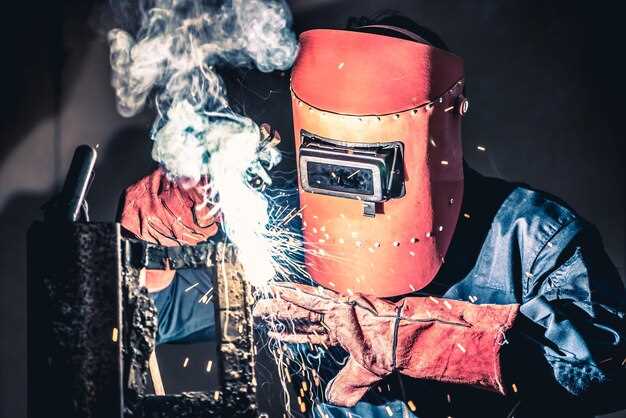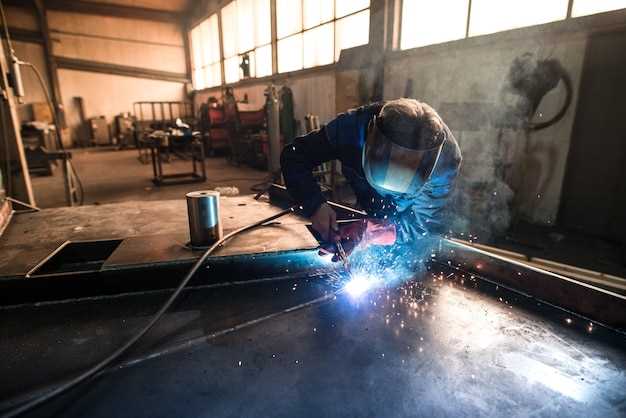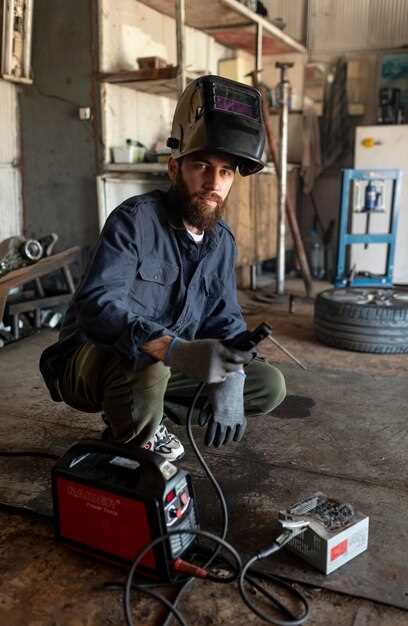

Welding is a crucial process in the fabrication industry, with the right equipment playing a vital role in achieving high-quality results. Selecting the appropriate welder is not just about power and performance; it also involves understanding the specific requirements of your projects. One of the first steps in this selection process is to consider the type of welding content you will be working on, including materials like steel, aluminum, and other alloys.
When assessing your needs, think about the size and complexity of the operations you intend to perform. Mods can enhance the functionality of your welding setup, allowing for customization that can improve efficiency and adaptability. For instance, specialized mods can help tailor the equipment to fit specific chassis types, ensuring that precision and durability are maintained.
Moreover, the choice of welder type–whether MIG, TIG, or Stick–will greatly influence the outcome of your fabrication. Each method has its strengths and weaknesses, so it’s essential to evaluate them in relation to your intended projects. Investing time in understanding these factors will not only enhance your welding skills but also ensure that your projects are executed with the highest standards of quality and integrity.
Understanding the Key Specifications of MIG Welders for Auto Fabrication

MIG welders, or Metal Inert Gas welders, are essential tools for auto fabrication, particularly when working on chassis modifications and repairs. Understanding the specifications of these welders is crucial for selecting the right machine that meets your specific needs.
Welding Amperage is a fundamental specification to consider. MIG welders typically range from 130 to 300 amps. For auto fabrication, especially when welding thicker materials or chassis components, a machine with higher amperage capacity is advisable. This allows for deeper penetration and a stronger weld.
Duty Cycle is another critical factor. This represents the amount of time a welder can operate continuously without overheating. Measured as a percentage over a 10-minute period, a welder with a higher duty cycle is suitable for larger projects that demand extended use, such as extensive chassis work.
The Wire Feed Speed is also significant. This determines how quickly the welding wire is fed into the welding arc. Different materials and thicknesses require different feed speeds. For auto fabrication, being able to adjust the wire feed speed ensures better control and efficiency during the welding process.
Voltage Settings influence the heat input and penetration during the welding process. A MIG welder with adjustable voltage settings provides versatility for various materials and thicknesses, which is vital when working with the diverse components of a vehicle chassis.
Lastly, consider the Cooling System of the welder. MIG welders can be equipped with either air-cooled or water-cooled systems. Water-cooled systems generally provide better performance during prolonged welding sessions, making them suitable for heavy-duty auto fabrication work.
By understanding these key specifications, fabricators can make informed decisions when choosing a MIG welder that fits their auto fabrication projects and ensures optimal results.
Identifying Essential Accessories for Enhancing MIG Welding Performance

When it comes to MIG welding, the right accessories can significantly improve your overall performance and results. Understanding what mods to incorporate can make a substantial difference in both quality and efficiency.
Chassis Components play a crucial role in facilitating your welding process. A robust and adjustable chassis can enhance stability and maneuverability, allowing for more precise welding. Investing in a high-quality welding cart can also help organize your equipment and ensure that everything is easily accessible during fabrication.
Another essential accessory is a welding helmet equipped with an auto-darkening feature. This allows you to maintain visibility without compromising safety. Look for helmets with adjustable settings to enhance usability across different welding tasks.
Wire Feeders are another important consideration. Upgrading to an advanced wire feeder minimizes feeding issues, ensuring a smooth weld. A dual-drive system is particularly beneficial, as it helps maintain consistent wire speed, reducing the chances of erratic feeding.
Additionally, selecting the right welding nozzles can significantly improve gas coverage. Using the appropriate size and style of nozzle ensures a better shielding gas flow, enhancing the weld quality and preventing contamination.
Finally, consider using a chassis-mounted spool gun for tackling aluminum welding. This accessory allows for a more controlled feed and reduces the chances of wire jamming, providing a seamless experience when working with softer metals.
In conclusion, by integrating these essential accessories tailored for MIG welding, you can optimize your results, enhance efficiency, and ensure professional-grade welds in your fabrication projects.
Evaluating Your Project Needs to Select Appropriate Chassis Modification Tools
When undertaking a chassis modification project, selecting the right tools is crucial for achieving optimal results. Understanding your project requirements will help you determine which tools will best suit your needs.
Firstly, analyze the specific modifications you intend to perform on the chassis. Consider the following aspects:
- Material Type: Identify the materials used in the chassis. Common materials include steel, aluminum, and composite materials. Each material requires different welding techniques and equipment.
- Thickness of Material: The thickness will influence the power requirements for your mig welder. Thicker materials necessitate a more powerful welder with higher output to ensure proper penetration and adhesion.
- Project Complexity: Assess the complexity of the modifications. Simple fixes may only require basic tools, but intricate modifications could necessitate advanced equipment and technology.
Once you have a clear understanding of your project scope, you can begin to evaluate the appropriate chassis modification tools, including welders:
- MIG Welder: A MIG (Metal Inert Gas) welder is an excellent choice for chassis modifications due to its versatility and ease of use. It works well with various materials and thicknesses, making it suitable for most fabrication tasks.
- Tig Welder: For more precise and clean welds, especially on thinner materials, a TIG (Tungsten Inert Gas) welder can be beneficial. However, it requires more skill and practice.
- Spot Welder: If your chassis modifications involve joining two overlapping sheets, a spot welder might be the right tool for quick and strong connections.
- Plasma Cutter: For cutting metal accurately, a plasma cutter can complement your welding equipment by providing clean cuts on various thicknesses.
Finally, consider your experience level and the resources available. Choose tools that you feel comfortable with and ensure that you have the necessary protective gear for safety during the modification process.
By carefully evaluating your project needs, you can make informed decisions on the most suitable tools for chassis modification, thereby improving both efficiency and quality of your work.







